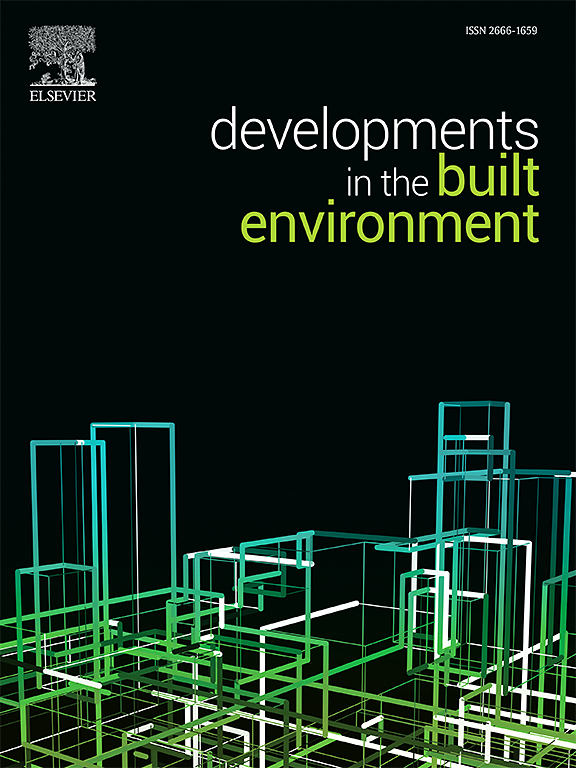Enhanced robotic cross-laminated timber panel assembly process
IF 8.2
2区 工程技术
Q1 CONSTRUCTION & BUILDING TECHNOLOGY
引用次数: 0
Abstract
The use of Cross-Laminated Timber (CLT) panels in construction is often constrained by their weight, making handling and installation challenging. These limitations frequently result in on-site planning and manual assembly, increasing risks and inefficiencies. This study proposes an integrated framework that combines Building Information Modeling (BIM), discrete event simulation, and robotic assembly to optimize the installation of CLT structures within the built environment. By leveraging these technologies, the methodology addresses material handling challenges while enhancing construction efficiency and adaptability to urban and prefabricated settings. Numerical simulations and robotic assembly experimental tests were conducted to evaluate the framework’s performance. Results demonstrate an improvement in assembly efficiency, reducing both accident risks and installation time compared to manual methods. Strong agreement between numerical and experimental findings underscores the potential of computational tools in advancing automated construction practices. This research provides actionable recommendations to promote the broader adoption of automated processes in CLT construction, contributing to safer, more efficient, and sustainable building practices within the evolving built environment.
增强的机器人交叉层压木板组装过程
交叉层压木材(CLT)板在建筑中的使用通常受到其重量的限制,使处理和安装具有挑战性。这些限制经常导致现场规划和手工组装,增加了风险和效率低下。本研究提出了一个结合建筑信息模型(BIM)、离散事件模拟和机器人装配的集成框架,以优化建筑环境中CLT结构的安装。通过利用这些技术,该方法解决了材料处理方面的挑战,同时提高了施工效率和对城市和预制环境的适应性。通过数值模拟和机器人装配试验对该框架的性能进行了评价。结果表明,与人工方法相比,该方法提高了装配效率,减少了事故风险和安装时间。数值和实验结果之间的强烈一致强调了计算工具在推进自动化施工实践中的潜力。这项研究提供了可行的建议,以促进在CLT建筑中更广泛地采用自动化过程,在不断变化的建筑环境中为更安全、更高效和可持续的建筑实践做出贡献。
本文章由计算机程序翻译,如有差异,请以英文原文为准。
求助全文
约1分钟内获得全文
求助全文
来源期刊

Developments in the Built Environment
Multiple-
CiteScore
7.40
自引率
1.20%
发文量
31
审稿时长
22 days
期刊介绍:
Developments in the Built Environment (DIBE) is a recently established peer-reviewed gold open access journal, ensuring that all accepted articles are permanently and freely accessible. Focused on civil engineering and the built environment, DIBE publishes original papers and short communications. Encompassing topics such as construction materials and building sustainability, the journal adopts a holistic approach with the aim of benefiting the community.
 求助内容:
求助内容: 应助结果提醒方式:
应助结果提醒方式:


